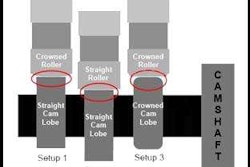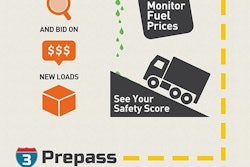Fleets get the attention in the marketplace these days — at least from a supplier’s perspective. Everyone wants to know what component or gadget they can market to Schneider, Swift or Wal-Mart. Sure the margin might not be what it is when selling to the little guy, but the volume is irresistible, and the implied endorsement of a trucking leader is invaluable.
Retailers of parts and service, though, have a completely different view of the market. The Schneiders, Swifts and Wal-Marts typically are not really their customers. Those fleets usually have direct sales relationships with the supplier. Local stores and shops might be the day-to-day distributor of parts and service to those customers, but they likely are filling this role without much margin.
For parts and service providers, the core customer usually is the little guy. If you listen to the so-called pundits, that’s a problem because the little guy supposedly is going away.
But there are some serious flaws in this argument. For starters, the fleet market isn’t just the over-the-road freight hauling segment. Odds are many of your customers are local, vocational or medium-duty operators — businesses that look as much like Schneider National as a Ford F-150 looks like a Freightliner Cascadia.
But even if you consider just the market that analysts really have in mind when they talk about the death of the owner-operator or small fleet, the argument overlooks some important points.
Yes, it is true that fleets operating 100 or more power units — about 0.6 percent of all fleets — own or operate 44 percent of the power units, according to Randall-Reilly’s RigDig Business Intelligence. But let’s not ignore the flipside: Fleets with fewer than 100 power units own or operate 56 percent of the power units.
And let’s look at that 44 percent. It represents power units that are either owned or operated by a fleet. In the for-hire trucking segment in particular, the “or operated” portion of a fleet usually means the truck is provided by an owner-operator or smaller fleet.
While the carrier that has leased the equipment may conduct maintenance on that truck, by law it cannot force the truck to be maintained at its shops. And in most cases, owner-operators don’t use their carriers’ maintenance facilities, according to Randall-Reilly’s ongoing research.
It’s unclear exactly what portion of the entire for-hire fleet falls within the “or operated” category, but at least among the nation’s largest carriers, the capacity provided by independent contractors is substantial. Each year, Truck Parts & Service’s sister brand, Commercial Carrier Journal, ranks the 250 largest for-hire trucking companies operating in the United States.
In CCJ’s reporting, about 160 of the 250 provided a breakdown of company drivers versus independent contractor drivers, and a little over 29 percent of the drivers were independent contractors. At least 26 carriers in the CCJ Top 250 use 1,000 or more independent contractor drivers. Among the 90 or so carriers that did not break out company and independent contractor drivers, the portion of tractors listed as “leased” was 30.6 percent.
Again, for-hire trucking companies typically don’t lease equipment from leasing companies, so a truck reported as leased usually is an owner-operator.
So between a quarter and a third of the capacity operated by the CCJ Top 250 is not owned by those carriers. Not all of these drivers are one-truck operations, of course. In the household goods industry, for example, it’s not uncommon for entire small trucking companies to operate as agents for a national brand. But even taking these situations into account, it’s apparent that a sizable portion of the trucks operated by the nation’s largest carriers are actually owned and maintained by very small businesses.
For some suppliers — information technology, for example — the distinction between “owned” and “operated” is largely irrelevant. But in truck parts and service, the customer usually is the truck owner. While it is possible that the share of truck ownership is shifting to larger operations, don’t let anyone tell you that the owner-operator or small fleet is going away.











